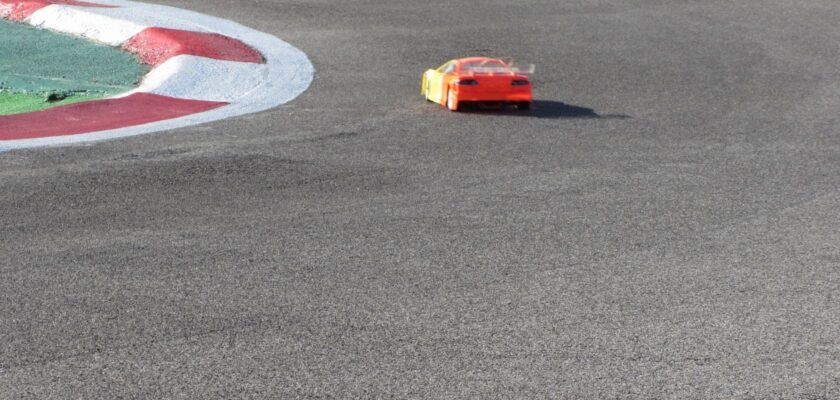Drifting an RC car is one of the most exciting aspects of the hobby. It combines precision, control, and an understanding of physics. Whether you are an experienced RC enthusiast or just starting out, this guide will give you the knowledge and techniques to drift like a pro. Kommvia is here to help you enjoy every turn and slide to the fullest.
Understanding the Physics of Drifting
Before hitting the track, it’s important to understand what makes a drift work. Drifting is a controlled slide around a corner where the rear wheels lose traction while the front wheels guide the car. It requires balancing three main forces:
- Inertia – This is the tendency of your car to keep moving forward. When entering a turn, inertia pushes your RC car outward.
- Friction – Friction between the tires and the surface controls how much your car slides. The key is reducing rear-wheel traction while keeping front grip.
- Centripetal Force – This force pulls the car toward the center of the turn, balancing against inertia and helping your car follow the curve.
Understanding these forces makes it easier to control your drift and make adjustments mid-turn.
Essential RC Car Setup for Drifting
Getting the right setup is critical. Focus on these key components:
- Chassis – Choose a chassis built for drifting, such as the Tamiya TT-02D or Yokomo YD-2. These are optimized for low traction and high maneuverability.
- Motor – A brushless motor with a high RPM range, usually between 3000-6000kV, is ideal for smooth drifts.
- ESC (Electronic Speed Controller) – A programmable ESC allows fine-tuning of throttle response and braking. This is crucial for maintaining control.
- Suspension – Soft suspension helps with weight transfer, which is important for initiating and sustaining drifts. Adjustable coil-over shocks work well.
- Tires – Hard compound or PVC tires reduce rear traction and make sliding easier.
- Weight Distribution – Balanced or slightly rear-biased weight distribution helps with drift initiation and control.
Step-by-Step Drifting Techniques
Once your RC car is set up, it’s time to learn the techniques:
- Initiating the Drift
- Throttle Blip: Approach a turn at moderate speed. Tap the throttle quickly to break rear traction.
- Counter-Steering: Turn the front wheels opposite the direction of the slide to control the drift.
- Maintaining the Drift
- Throttle Control: Adjust throttle to control drift angle. More throttle increases the slide, less reduces it.
- Steering Adjustments: Make small, precise movements to keep the car balanced.
- Exiting the Drift
- Smooth Throttle Release: Ease off the throttle as you finish the turn to regain traction.
- Straighten Wheels: Align the front wheels with the car’s direction for a smooth transition.
Advanced Techniques
Once you are comfortable with basic drifting, try these advanced moves:
- Feint Drift – Flick the car opposite the turn before drifting for a more dramatic slide.
- Clutch Kick – Tap the throttle mid-drift to increase the drift angle.
- Brake Drift – Use brakes to transfer weight to the front wheels and initiate a drift.
- Manji Drift – Chain alternating drifts in quick succession to demonstrate precision and control.
Practice Tips
Drifting takes practice, patience, and experimentation. Try these tips:
- Use Markers: Set up cones to create a drift course.
- Record Your Sessions: Reviewing footage helps identify areas for improvement.
- Experiment with Settings: Tweak suspension, tire compounds, and weight distribution to find your perfect balance.
- Join a Community: Connect with other drifters online or locally for tips and feedback.
Final Thoughts
Drifting is an art that combines skill, precision, and strategy. With the right setup, consistent practice, and an understanding of the physics involved, you can master RC drifting and enjoy every moment on the track.
Get out there, hit the track, and let Kommvia guide you through the thrilling world of RC car drifting. Don’t forget to capture your best slides on video and share your progress!


